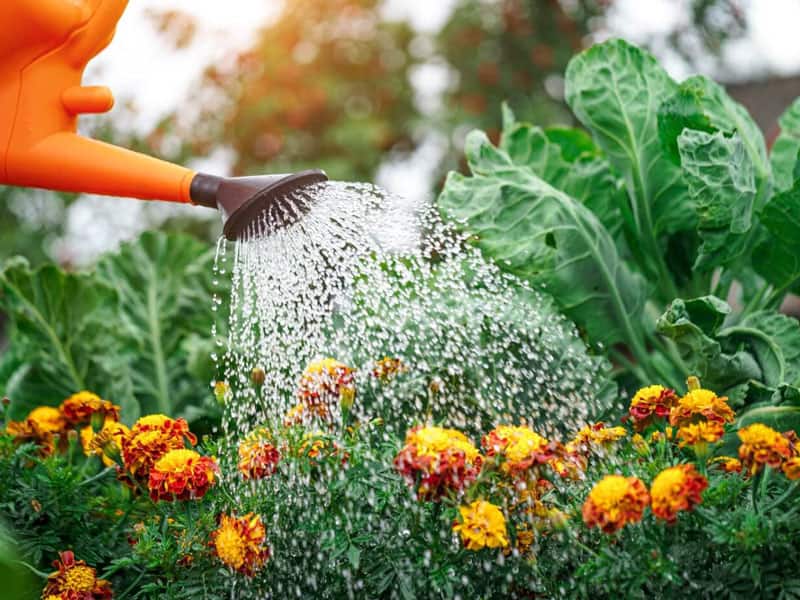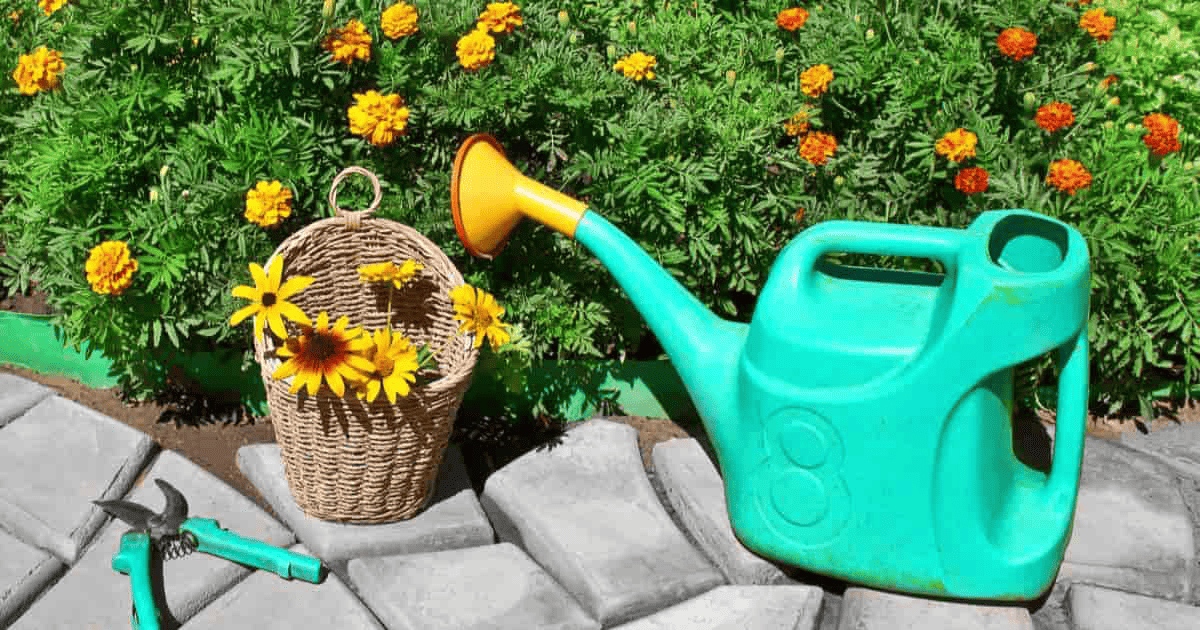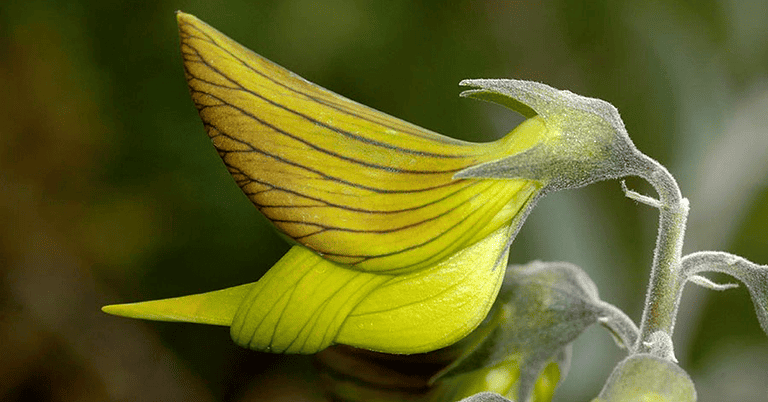How Much Water Do Marigolds Need
Do you love the bright, cheerful look of marigolds in your garden? Marigolds are easy to care for and add to any outdoor space.
But how much water do they need? Understanding the water requirements of different varieties of marigolds is vital to keeping them healthy and thriving.
This article discusses the watering needs of marigolds, from seedlings to mature plants. Also, cover tips and tricks for ensuring your marigold blooms beautifully all season long!
How often should you water marigolds growing in pots?
Marigolds growing in pots should be watered once a week, but they may require more frequent watering during the summer to ensure the soil doesn’t dry out completely. Too much or too little water can cause problems for marigolds, such as root rot from overwatering and wilting from underwatering.
The amount of water your marigold needs will also depend on where you’re planting it, how often you plan to water it, and the size and type of marigold plant you have. French Marigolds need slightly less moisture than Tagetes Marigolds.
To determine when it’s time to water your marigold plant, check the soil moisture at the base of the plant before adding any additional water.

How to determine when it’s time to water your marigold plant
Knowing when to water your marigold plant is vital to keeping it healthy and thriving. To determine when it’s time to water, check the soil moisture at the base of the plant. If it’s dry, you know it’s time to drink it.
Look for signs that your marigolds need watering, such as wilting or yellowing leaves. Be sure not to overwater, though, as this can cause root rot and other issues. Ensure you understand your marigold’s water needs in direct sunlight and how soapy water can affect them. (Read Why Is My Corn Plant Turning Yellow)

Checking the soil moisture at the base of the plant
Checking the soil moisture at the bottom of your marigold plant is critical to understanding its water needs, so how do you know when it’s time to water?
The best way to determine the moisture levels of your marigold’s soil is by sticking a finger or a trowel into the ground near the base of the plant. If it feels damp, your marigolds don’t need watering yet; if it’s dry, they need some hydration.
Generally speaking, marigolds in full sun must be watered twice weekly in hot weather and about once weekly in cooler temperatures. However, this can vary depending on other environmental factors such as wind, rainfall, and humidity.
When checking moisture levels at the base of your plant, keep an eye out for signs that your marigolds need to be watered, like wilting or yellowing leaves, which may indicate underwatering, At the same time, soft roots and stunted growth could mean overwatering.
Moving forward with proper care for your plants will help balance their water needs with all other essential factors for optimal growing conditions.
Recognizing signs that marigolds need to be watered
Wilting leaves and bending stems are tell-tale signs your marigolds need a drink. Recognizing these signs is essential to keep your marigolds healthy and ensure they get the water they need.
Without water, plants won’t bloom or be able to photosynthesize correctly, so it’s essential to understand proper watering techniques for your marigolds:
- When planting marigolds in a pot or outside, check the soil moisture at least once a week and water when needed.
- If planted inside, inspect the soil at least twice per week. Marigolds need full sun to thrive, so adjust your watering schedule accordingly during hot weather and sunny days.
- When planting seedlings, it’s time to water when the top two inches of soil dry out completely. This will ensure each plant has enough nutrients to survive without becoming over-watered or underwatered.
Avoiding root rot from overwatering
Avoid overwatering your marigolds or risk root rot – a quick and easy way to kill them. When watering an established marigold plant, ensure you only water when the top two inches of soil are dry. Marigolds need more frequent watering in full sunlight than in partial shade. Tagetes marigolds must be watered once weekly, while Calendula marigolds may require slightly less water than other varieties.
When determining how much water marigolds need, consider environmental factors like season and temperature for accurate results. To prevent overwatering, use mulch around the plants to help maintain soil moisture levels and drip irrigation systems that precisely control your plant’s watering needs. To keep your growing marigolds healthy and thriving, ensure you are providing them with enough, but not too much, water each week.
Transitioning from direct sun to indirect light can significantly impact the amount of water needed for marigold plants, so understanding their specific needs is essential for success when it comes time to fertilize and nurture these beautiful blooms.
Understanding marigold water needs in direct sunlight
Marigolds in direct sunlight require a bit more TLC when it comes to their watering needs, so be sure to keep an eye on them and give them a good soak when needed.
Marigolds aren’t as demanding as other plants but need to be watered regularly. Generally, potted marigolds should be watered about two times per week; however, if the plant is in full sunlight, you may need to water it slightly more often.
Marigolds prefer full sun, which affects their water needs; they can handle some shade but require additional watering during hot summer months. Potted marigolds should be watered until the soil is completely saturated at least once every week and monitored for signs of overwatering or underwatering.
Your marigold water needs can easily be met with proper care and attention, and your plants will thrive! Transitioning into the next topic of discussion–soapy water and its effects on marigold plants–it is essential to understand how this common household item can impact your plant’s health. (Learn How To Connect Two Hoses Together)
Soapy water and its effects on marigold plants
It’s essential to be aware of the effects of soapy water on marigolds, as even a tiny amount can cause wilting and discoloration.
Marigolds planted in pots should not be watered with soapy water regularly because it can disrupt the balance of nutrients in the soil and prevent the plant from absorbing water properly.
Instead, it’s better to use plain water when watering marigolds, giving them enough but not too much.
It’s best to water deeply and slowly at least once a week, allowing the plant to absorb the water instead of collecting standing water in the pot.
If your marigolds may need more than one watering per week due to hot temperatures or dry soil, use less water each time rather than flooding them.
Transitioning into proper watering techniques for marigold seedlings – requiring more frequent watering – is essential for growing healthy plants blooming beautifully throughout the season.

Proper watering techniques for marigold seedlings
You’ll be astonished at how quickly your marigold seedlings will grow if you give them just the right amount of water!
When caring for marigolds in pots, it’s essential to consider their size and container conditions. Depending on their size, watering once a week should suffice; however, larger containers may need more frequent watering.
When you water marigolds in pots, ensure they receive at least 1-2 inches of water per week if grown in smaller containers and up to 2-3 inches per week if grown in larger containers. Overwatering is just as bad as underwatering, so it’s essential to check the soil moisture often and adjust your schedule accordingly.
Signs of an underwatered marigold include wilting leaves or stems that bend easily. On the other hand, overwatering can lead to yellowing leaves and soft roots, which are signs that something is wrong with your plant.
With proper care, your marigold seedlings should thrive! By understanding the varying needs of different varieties of marigolds, you can provide the best care for your plant while avoiding common issues like root rot and stunted growth due to overwatering or lack thereof.
Knowing when to adjust your watering routine based on seasonal changes can help ensure your plants stay healthy all year round.
Marigold varieties and their differing water requirements
Consider the type you’re growing when deciding how much to water your marigolds. Calendula and Tagetes marigolds have different water needs. The former requires more frequent watering than the latter.
Additionally, flower size and plant height can affect how often you water your marigolds. Taller plants will require more water than shorter ones. Finally, differences in sunlight exposure may also affect watering requirements. Complete sun plants need more frequent watering than those in partial shade.
Water needs of Calendula marigolds vs. Tagetes marigolds
Comparing the water needs of Calendula marigolds and Tagetes marigolds can be tricky, so it’s essential to understand their differences to ensure your plants thrive. French Marigolds are a type of Tagetes that require more frequent watering than Calendula Marigolds. (Learn How Long Do Roses Last In The Fridge)
To keep your marigolds healthy, water them evenly and correctly. Here are some tips for managing the water requirements of both types:
- How often do water marigold seedlings? Generally, marigold seedlings should be watered every few days as they establish in soil.
- It is best to water mature marigolds once a week or more often during hot weather or when there is little rain.
- Always reach down into the soil when watering your plants rather than spray from above. This will provide even moisture all around the roots!
- It’s also important not to overwater. If you see any standing pools of water on top of the soil after you have finished watering, you have applied too much and should reduce how much water your plants receive next time!
Watering your plants correctly is essential for keeping them healthy. Understanding how much each variety needs will help ensure French Marigolds and Calendula Marigolds stay vibrant and bloom beautifully throughout the summer months! By caring for their needs, you can quickly provide them with the right amount of hydration they need for optimal growth without compromising plant health or development by over- or underwatering these delicate flowers.
How flower size and plant height affect marigold watering
Considering the size of your marigold’s flowers and their height when determining how often to water it is essential for keeping it healthy and vibrant. When caring for marigolds in pots, water the plants near other plants less frequently than isolated ones. Larger marigold flowers require more water than smaller ones so containers may need more frequent watering.
Marigolds do not like soil that becomes too saturated, so watch for signs of overwatering, such as yellowing leaves or mushy stems. Soapy water can be used as a deterrent to discourage pests from attacking your marigold; however, it shouldn’t be used regularly as it will affect the plant’s ability to absorb nutrients from the soil.
With proper care and attention, you can keep your marigolds healthy and blooming without worrying about them becoming overwatered or underwater. Transitioning to watering requirements for marigolds in full sunlight versus partial shade, one must adjust their watering routine based on the amount of sun exposure their plants receive daily.
Watering requirements for marigolds in full sunlight vs. partial shade
Now that you know how flower size and plant height affect marigold watering, it’s essential also to consider the sun. Marigolds in full sunlight will need more water than those in partial shade.
When planted outdoors, they should be watered at least once a week. If your marigolds experience scorching temperatures, they may need more water per week than usual. Those in full shade or pots don’t require as much water since they have protection from the sun. However, if your plants are drying out quickly, you may want to water them twice weekly.
Marigolds don’t need much water and can go without for quite some time; however, they must be watered at least once a week when planted outdoors. You can keep your marigolds thriving in your garden with sunlight and proper watering habits!

Helpful tips for growing marigolds and preventing common issues
To ensure your marigolds are thriving, it’s essential to be mindful of common issues and follow the best practices for watering. Marigolds grown in full sun may need more frequent watering than those in partial shade or heavier soil. When deciding how much to water, consider the location of your plants – an area with full sun will require more frequent watering than a location that receives only partial sun.
Watering plants too often can lead to root rot and other damage, so finding the right balance between providing enough water and not overwatering is essential. To help with this balancing act, use a 2-column by 5-row table like the one below to track when your marigolds need water:
| Sunlight | Frequency |
|---|---|
| Full | Weekly |
| Partial | Bi-weekly |
When grown in full sun, marigolds are susceptible to drying out quickly and needing more water than other plants. If you notice wilting or shriveling leaves on your marigolds – no matter what stage they’re at – it’s best to immediately provide them with additional water. During hot weather or drought conditions, you may need to adjust your watering schedule accordingly, ensuring each plant gets the water it needs for optimal growth and blooming. (Learn How To Tell If Dehumidifier Is Working)
Conclusion
You’ve now learned the ins and outs of marigold watering! With this newfound knowledge, you can ensure your marigolds will thrive and bloom magnificently for years.
From understanding the different species of marigolds and their water needs to determining when it’s time to water them, you’re sure to have success with these beautiful plants.
Remember: when watering your marigolds, less is more – a little extra love goes a million miles!

FAQ
Q: How much water do marigolds need?
A: Marigolds typically need 1 to 2 inches of water per week when planted outdoors and slightly more when grown in pots. Keep the soil moist evenly and maintain healthy marigold plants without overwatering.
Q: How much water do marigolds need in pots?
A: Marigolds in pots generally need slightly more water than those planted in the ground, approximately 2 inches per week. Water the soil evenly and avoid overwatering to prevent root rot and other issues.
Q: How do you know if your marigold has been underwatered?
A: An underwatered marigold plant may show symptoms such as wilting, dry leaves, and stunted growth. Healthy marigolds require regular watering to maintain the moist soil conditions they thrive in.
Q: What are the signs of an overwatered marigold?
A: An overwatered marigold may have yellowing leaves, soft and mushy stems, and root rot. Overwatering marigolds can lead to various issues and should be avoided to ensure healthy growth.
Q: How often should I water marigolds in the summer?
A: In the summer, it is essential to water marigolds regularly, especially during hot and dry periods. Aim for 1 to 2 inches of water per week for outdoor plants and about 2 inches per week if grown in pots.
Q: Can marigolds survive if they’ve been overwatered?
A: It may be challenging for overwatered marigolds to recover, but it is possible if the problem is corrected early. Adjust your watering schedule, give the plant enough time to dry out before watering again, and always maintain proper drainage.
Q: What is the difference between Tagetes marigolds and Calendula marigolds regarding water needs?
A: Both tagetes and calendula marigolds require about the same amount of water, around 1 to 2 inches per week. The main difference lies in their appearance, with tagetes producing vibrant blossoms and calendula featuring daisy-like flowers.
Q: Do marigold flowers require much water?
A: Marigold flowers, like the rest of the plant, require water to thrive, but they do not need excessive amounts. Again, aim for 1 to 2 inches of water per week when planted outdoors or slightly more for those grown in containers.
Q: How can I prevent overwatering my marigolds growing in containers?
A: To avoid overwatering marigolds in containers, ensure proper drainage by using a pot with drainage holes and a well-draining soil mix. Monitor the soil’s moisture levels, allowing the top inch to dry out slightly between waterings, and avoid letting the plant sit in standing water.
Q: What location should marigolds be planted in to reduce the risk of overwatering?
A: Plant your marigolds in a location that receives full sun and has well-draining soil. This will help the soil dry out between waterings, reducing the risk of overwatering marigolds and promoting healthy growth.







